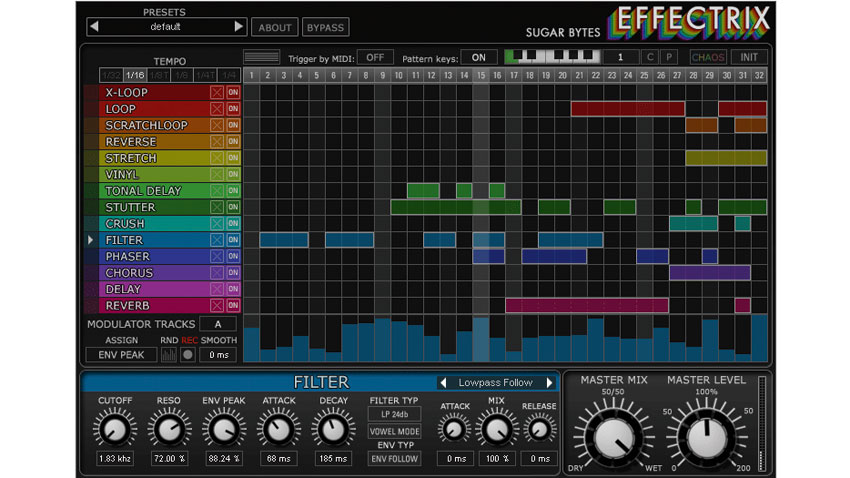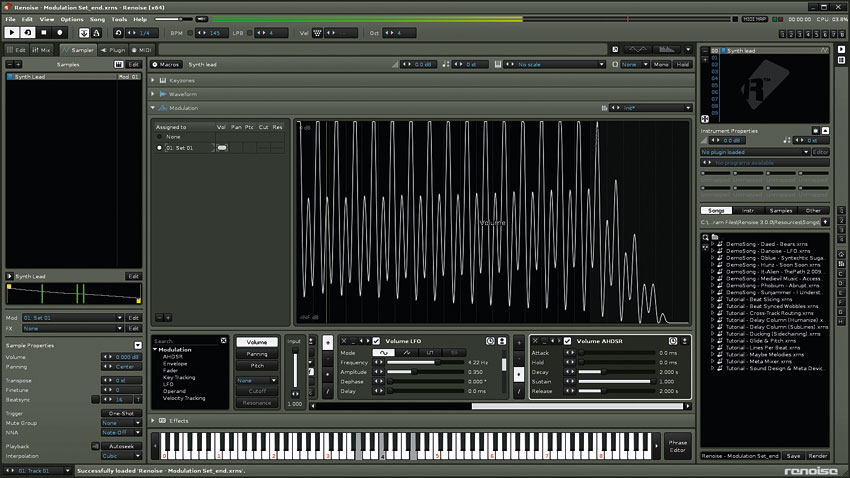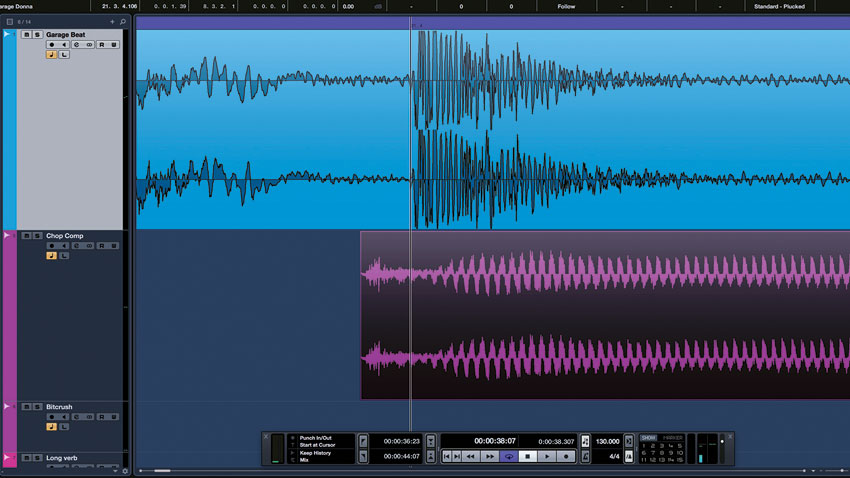Vocal acapella masterclass
Top tips to whip those vocal samples into shape
11 creative acapella mashup tips
Recording and processing your own singing or someone else's is one thing, but making the most of an acapella sourced from outside your studio can be a whole different ball game.
With this collection of 11 tips, we'll show you how to take those vocal stem samples and make them your own.
1. Just duet
We often arrange contrasting vocal sounds snipped from a single acapella, or use processing to make one voice sound like many. What we don't often see, however, is a producer sourcing vocal cuttings from recordings of two different vocalists - with contrasting voices. Combining snippets of, say, a dry documentary voiceover with a wailing diva is bound to create sonic diversity, although even picking two fairly similar vocal sources can work in a different way. If you really want to push the concept, try creating a duet using two sets of chopped vocals!
2. Mixed voice
Although you may think of an externally sourced vocal as 'a sample', it can still require the same mix work as a vocal you've recorded yourself. You can apply all the usual vocal mixing effects: compression, de-essing and reverb/delay. If the vocal already has processing applied, you won't be able to shape it as much because these mix decisions are essentially baked into the audio. Even so, a broad EQ could help balance the vocal with the rest of the mix, so it sounds like a part of your track rather than something that's been slapped on top of it.

3. Micro-fun
If you've got the patience, zoom in way further than you normally would and cut a vocal phrase into many tiny slices. Spread the pieces out in time, and duplicate them to fill the gaps, creating a crude granular pitchshifting effect. That's very much the tip of a rather hefty sonic iceberg, though, as you can continue to arrange the slices on a micro level, crossfading, changing their order, adjusting levels, and applying other vocal chopping and processing tricks.
In the current age of instant glitch effects and on-tap granular processing, this kind of atomic-level manual editing is something of a lost art, but it gives you absolute control and is capable of truly insane results. Electronica icon BT is famous for this 'stutter edit' technique, and it's long been a staple of IDM programming.
4. Total transformation
No matter how pristinely produced the acapella you're using, there's nothing stopping you using voice transformation techniques to warp and disguise its true nature. Break out the vocoders, pitchshifters, tuners and have at it! Even just applied to the occasional word, treatments like these can put a real twist on your acapella work.
Want all the hottest music and gear news, reviews, deals, features and more, direct to your inbox? Sign up here.

5. Instant glitch
If you don't have the patience for those painstaking micro-editing tricks, but you love the sound of them, you'll want to pick up an instant glitch effect plugin. One of the best is Stutter Edit by BT and iZotope, recreating Mr Transeau's own approach but with direct MIDI control. Sugar Bytes' Effectrix, meanwhile, remains a hugely popular option for easily adding rhythmic chaos to any sound source - it has a bunch of pattern-triggerable effects, but it's the scratch-style looper and stutter effects that'll trigger a chopping frenzy.
Others worth trying are Ableton Live's Beat Repeat, Illformed Glitch 2, Vengeance-Sound's Glitch Bitch, Computer Music's Eurydice CM, and Sugar Bytes' Looperator and Turnado.
6. Reverse the verse
You've probably reversed vocal lines before, or even singled out just the odd word in a phrase for the ol' backwards treatment, but have you tried reversing a single syllable or vowel sound? Results vary depending on exactly what you choose to reverse, but can range from up-front and obvious to a 'not quite natural' effect that listeners won't be able to put their finger on.
7. Background music
Legal issues aside, sampling vocals directly from an existing fully mixed track might seem like a bad idea as you'll likely be stuck with the music in the background, and efforts to separate the vocal further may impair clarity or quality. If the sample is too perfect a fit not to use, though, you could always embrace it as it is, and allow any surrounding musical parts to feature in your track, too. You may find that once you
start chopping the vocal up, certain phrases and sounds don't actually have much music happening at the same time anyway. If needed, use basic filters to roll away the extreme low and high end and focus attention on the vocal.
8. Talk is cheap
Vocal samples don't just have to be of singers - try using spoken samples from movies, documentaries, interviews, TV shows, and so on. YouTube is a particularly rich mine of verbal content, and you can either use a downloader to grab the audio, or record audio live using a program such as AudioHijack (Mac) or TotalRecorder (PC). As ever, bear in mind legalities and copyright restrictions when sampling in this way.
9. Free speech
Google 'acapella vocals', and you'll find a bunch of options, many of which are free - but just because it's free to download doesn't mean you have the right to use it in a commercially released track. For instance, freevocals.com let you download their professionally produced acapellas for nowt, and you can use them for educational purposes or to create tracks that you then pitch to a record label - for any commercial purposes, such as a release, though, you have to apply for a license.
There are also plenty of completely unlicensed downloads of vocal stems from famous commercial tracks floating around out there, and while using these can be a lot of fun, you could land in a very uncomfortable tub of legal hot water if you don't seek clearance for their usage in a released track. A much safer option for sourcing ready-made vocal tracks are royalty-free sample packs, such as the ones included Computer Music magazine.

10. Singing samplers
If you want to play cut-up vocals melodically in a sampler, first tune them all to the same note, then explore your sampler's methods for switching between sample layers. For example, you could spread your vocal cuts across different velocities, so that playing harder or softer triggers different sounds. Or how about using the mod wheel to select a layer directly? This is also an ideal task for a tracker such as Renoise (or its plugin offspring, Redux, which puts a slice of the world's finest tracker in your DAW), as trackers make it very easy to switch between samples on the fly and apply very precise modulations and tweaks to each sound triggered - perfect for cut-up vocal mayhem!

11. Ahead of its time
Whether you're triggering vocal chops via MIDI or laying them out on audio tracks, some sounds may not seem in time even though they appear to be perfectly quantised. That's because, for some vocal sounds, the point we hear as the 'emphasis' occurs partway through that sound. For example, when a word begins
with an "S" sound, the singer generally begins pronouncing the S just before the beat starts. You may have to move certain clips slightly earlier in time, then, for them to sound on the beat.
Current page: 11 creative acapella mashup tips
Prev Page How to extract an acapella from a track Next Page How to turn a vocal sample into a pad